Like everything else related to your home, your roof has a lifespan. Depending on the materials used to construct your roof, that lifespan could significantly differ from your neighbors. More importantly, the roof lifespan you were given by your roofing installer was an estimate, and could itself vary as well. It’s not uncommon to see roof lifespans on the high end of an estimate that are double (or more) the estimate’s low end, which may leave you with no real sense of how long your roof is really expected to last. What you can absolutely rely on are telltale signs that it's time to replace your roof! Everyone knows a leaky roof is a sign of trouble, but what else should you be on the lookout for? Here are 5 other signs that it might be time to call someone about a new roof:
Damaged shingles
One or two damaged shingles won’t mean replacing your whole roof, but if you don’t address the problem when you notice them, you’re inviting water damage—and if that damage becomes severe enough, you will end up needing a new roof. So keep your eyes open for any damaged or broken shingles and get them taken care of immediately. Not only are they an eyesore, but they are a potential costly problem waiting to happen.
Curling shingles
Much like shingles that are obviously damaged, shingles that are curling can also pose a problem—and be a sign it’s time for a new roof. Shingles can curl because they are old, which is a good indicator that it’s time for a new roof. However, they can also start to curl prematurely if they were lined up improperly, they were installed incorrectly or if you have poor attic ventilation. Any of these issues may mean replacing your roof earlier than you were anticipating, so be sure to watch for curling shingles, and if you see them, contact us.
Missing granules
Roofing shingles are composed of granules. Over time, they can become dislodged. Severe weather events, like hail storms, can also cause the granules to detach. If you’re finding lots of granule debris in your yard, you may need to consult with a roofing professional.
Streaks on your roof
If your roof has black streaks running down in, it’s likely that what you’re seeing is a type of algae. While the algae itself isn’t harmful, it feeds on the limestone in your shingles, which damages them over time. As the algae increases in size, more and more moisture becomes trapped underneath, posing an additional problem. The long-term solution is replacement with algae-resistant shingles, which may be necessary if the damage is severe. If you catch the problem early enough, you can install zinc or copper strips to prevent algae growth. When it rains, the water reacts with the stripping to produce a solution that keeps new algae from growing. However, the solution will not affect existing algae.
Improperly installed flashing
Roof flashing is a thin metal material used to direct water away from certain areas of your roof, particularly your chimney and sidewall. If the flashing rusts, or becomes loose, or wasn’t installed properly to begin with, it won’t do its job properly and water will end up running behind it. This can cause extensive damage. Improperly flashed chimneys can result in rotting roof timbers. If you suspect you may have a problem, go up into your attic after a heavy rain and look for water around the chimney. If you’re still unsure, contact a roofing professional.
A new roof is one of the most costly investments you can make in your home. Once you’ve done so, you want to make sure to take care of it. Address any potential problems you might find when they are still small so that you don’t have to replace your roof prematurely.

.png)


